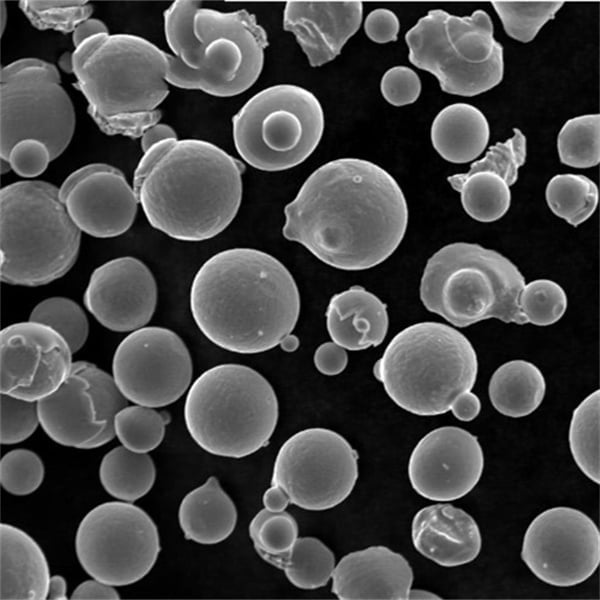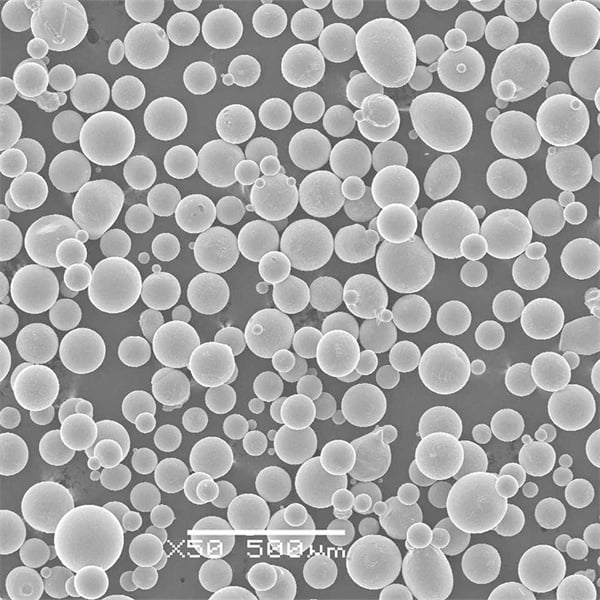Laserbaserad pulverbäddsfusion
Innehållsförteckning
Laserbaserad pulverbäddsfusion (PBF) revolutionerar tillverkningsindustrin och erbjuder oöverträffad precision, effektivitet och flexibilitet. Men vad är det egentligen, och varför ska du bry dig? Låt oss dyka djupt in i denna innovativa teknik, utforska dess krångligheter, applikationer och varför den håller på att bli en spelväxling i produktionsvärlden.
Översikt över Laser-Based Powder Bed Fusion
Laserbaserad pulverbäddfusion är en additiv tillverkningsprocess som använder en kraftfull laser för att smälta ihop metallpulverpartiklar lager för lager för att skapa ett fast, tredimensionellt föremål. Det är en teknik som faller under paraplyet för 3D-utskrift men som är speciellt anpassad för att producera högkvalitativa metallkomponenter.
Viktiga egenskaper hos laserbaserad pulverbäddfusion:
- Precision: Uppnår intrikata detaljer och komplexa geometrier med hög noggrannhet.
- Materialeffektivitet: Minimerar spill genom att endast använda den nödvändiga mängden pulver.
- Anpassning: Möjliggör skapandet av skräddarsydda delar skräddarsydda för specifika behov.

Olika typer av metallpulver för Laserbaserad pulverbäddsfusion
Att välja rätt metallpulver är avgörande för framgången med PBF-processen. Här är en sammanfattning av några populära metallpulver som används i PBF, tillsammans med deras beskrivningar:
| Metallpulver | Beskrivning |
|---|---|
| Titan Ti-6Al-4V | Känd för sitt höga hållfasthet-till-viktförhållande, utmärkta korrosionsbeständighet och biokompatibilitet, vilket gör den idealisk för flyg-, medicinska implantat och bilindustrier. |
| Aluminium AlSi10Mg | Kombinerar lätta egenskaper med god mekanisk hållfasthet och värmeledningsförmåga, perfekt för fordons- och flygkomponenter. |
| Rostfritt stål 316L | Erbjuder utmärkt korrosionsbeständighet, styrka och duktilitet, flitigt använt i medicinska, marina och kemiska processtillämpningar. |
| Inconel 718 | En nickel-krom superlegering med hög temperaturbeständighet och god draghållfasthet, som används i rymd, gasturbiner och kärnreaktorer. |
| Kobolt-Krom | Hög slitstyrka, biokompatibilitet och styrka, som vanligtvis används för dentala och ortopediska implantat, såväl som i rymdtillämpningar. |
| Maråldrat stål (1.2709) | Känd för sin utmärkta hållfasthet och seghet efter värmebehandling, som används i verktygs-, rymd- och högspänningskomponenter. |
| Koppar (Cu) | Exceptionell termisk och elektrisk ledningsförmåga, lämplig för elektriska komponenter och värmeväxlare. |
| Nickellegering (625) | Erbjuder utmärkt korrosions- och oxidationsbeständighet, hög hållfasthet, används inom marin-, kemi- och flygindustrin. |
| Verktygsstål (H13) | Känd för sin hårdhet, styrka och motståndskraft mot nötning, som ofta används vid formtillverkning, pressgjutning och verktygstillämpningar. |
| Titan (Ti-5Al-2.5Sn) | Bra högtemperaturprestanda och krypmotstånd, som används i flyg- och högpresterande fordonsapplikationer. |
Egenskaper och egenskaper hos metallpulver
| Metallpulver | Sammansättning | Fastigheter | Tillämpningar |
|---|---|---|---|
| Titan Ti-6Al-4V | Ti, Al, V | Högt förhållande mellan styrka och vikt, korrosionsbeständighet, biokompatibilitet | Flyg- och rymdindustrin, medicinska implantat, fordonsindustrin |
| Aluminium AlSi10Mg | Al, Si, Mg | Lätt, god mekanisk hållfasthet, värmeledningsförmåga | Fordon, flyg- och rymdindustrin |
| Rostfritt stål 316L | Fe, Cr, Ni, Mo | Korrosionsbeständighet, styrka, duktilitet | Medicinsk, marin, kemisk bearbetning |
| Inconel 718 | Ni, Cr, Fe, Nb, Mo, Ti | Hög temperaturbeständighet, draghållfasthet | Flyg- och rymdindustrin, gasturbiner, kärnreaktorer |
| Kobolt-Krom | Co, Cr, Mo | Slitstyrka, biokompatibilitet, styrka | Dentala, ortopediska implantat, flyg |
| Maråldrat stål (1.2709) | Fe, Ni, Co, Mo | Styrka, seghet efter värmebehandling | Verktyg, flyg, högspänningskomponenter |
| Koppar (Cu) | Cu | Termisk och elektrisk ledningsförmåga | Elektriska komponenter, värmeväxlare |
| Nickellegering (625) | Ni, Cr, Mo, Nb | Korrosions- och oxidationsbeständighet, hög hållfasthet | Marin, kemi, flyg |
| Verktygsstål (H13) | Fe, Cr, Mo, Si, V | Hårdhet, styrka, nötningsbeständighet | Formtillverkning, pressgjutning, verktyg |
| Titan (Ti-5Al-2.5Sn) | Ti, Al, Sn | Högtemperaturprestanda, krypmotstånd | Aerospace, högpresterande fordon |
Tillämpningar av Laser-Based Powder Bed Fusion
Laserbaserad PBF skapar vågor i olika branscher, tack vare dess mångsidighet och precision. Här är en titt på var den används och varför den är så effektiv:
| Industri | Tillämpningar |
|---|---|
| Flyg- och rymdindustrin | Motorkomponenter, konstruktionsdelar, lättviktsfästen |
| Medicinsk | Specialanpassade implantat, proteser och kirurgiska instrument |
| Fordon | Lättviktskomponenter, anpassade delar, prestandaförbättringar |
| Verktyg | Injektionsformar, pressgjutningsformar, anpassade verktyg |
| Smycken | Anpassade mönster, invecklade mönster, snabb prototypframställning |
| Energi | Turbinblad, värmeväxlare, bränslemunstycken |
| Elektronik | Kylflänsar, elektriska komponenter, skräddarsydda kapslingar |
| Tandvård | Kronor, broar, tandimplantat |
| Marin | Korrosionsbeständiga delar, lätta komponenter |
| Arkitektur | Anpassade armaturer, designprototyper |
Fördelar med Laserbaserad pulverbäddsfusion
Varför får Laser-Based Powder Bed Fusion så mycket uppmärksamhet? Här är några övertygande skäl:
- Precision och detalj: Kan producera intrikata och komplexa geometrier som är utmanande för traditionella tillverkningsmetoder.
- Materialeffektivitet: Minimerar avfall genom att endast använda den nödvändiga mängden metallpulver.
- Anpassning: Skapa enkelt skräddarsydda delar skräddarsydda för specifika krav.
- Hastighet och effektivitet: Snabbare produktionstider jämfört med konventionella metoder.
- Styrka och hållbarhet: Producerar delar med utmärkta mekaniska egenskaper.
Nackdelar med Laser-Based Powder Bed Fusion
Trots sina många fördelar har laserbaserad PBF också några begränsningar:
- Kostnad: Hög initial investering i utrustning och material.
- Komplexitet: Kräver specialiserade kunskaper och färdigheter för att fungera effektivt.
- Begränsningar i storlek: Vanligtvis begränsad till mindre delar på grund av byggkammarens storlek.
- Ytfinish: Kan kräva efterbearbetning för att uppnå önskad ytkvalitet.
Specifikationer, storlekar, kvaliteter och standarder
| Metallpulver | Specifikationer | Storlekar | Betyg | Standarder |
|---|---|---|---|---|
| Titan Ti-6Al-4V | ASTM B348, ASTM F1472 | 15-45 µm, 45-106 µm | Betyg 5 | ISO 5832-3, AMS 4928 |
| Aluminium AlSi10Mg | EN AC-43400 | 20-63 µm, 45-90 µm | ||
| Rostfritt stål 316L | ASTM A276, ASTM F138 | 15-45 µm, 45-106 µm | ISO 5832-1 | |
| Inconel 718 | AMS 5662, ASTM B637 | 15-45 µm, 45-106 µm | ||
| Kobolt-Krom | ASTM F75, ASTM F1537 | 15-45 µm, 45-106 µm | ||
| Maråldrat stål (1.2709) | DIN 1.2709, AMS 6514 | 15-45 µm, 45-106 µm | ||
| Koppar (Cu) | ASTM B170 | 20-63 µm, 45-90 µm | ||
| Nickellegering (625) | AMS 5666, ASTM B443 | 15-45 µm, 45-106 µm | ||
| Verktygsstål (H13) | ASTM A681 | 15-45 µm, 45-106 µm | ||
| Titan (Ti-5Al-2.5Sn) | ASTM B348 | 15-45 µm, 45-106 µm |
Leverantörer och prisuppgifter
| Leverantör | Metallpulver tillgängliga | Prissättning (per kg) | Plats |
|---|---|---|---|
| Snickeriteknik | Titan, aluminium, rostfritt stål, Inconel, kobolt-krom | $200 – $600 | USA |
| Sandvik | Titan, aluminium, rostfritt stål, Inconel, kobolt-krom | $250 – $700 | Sverige |
| GKN Additiv | Titan, aluminium, rostfritt stål, Inconel, kobolt-krom | $220 – $650 | Tyskland |
| LPW-teknik | Titan, aluminium, rostfritt stål, Inconel, kobolt-krom | $230 – $680 | STORBRITANNIEN |
| Höganäs | Titan, aluminium, rostfritt stål, Inconel, kobolt-krom | $240 – $690 | Sverige |
| AP&C | Titan, aluminium, rostfritt stål, Inconel, kobolt-krom | $210 – $620 | Kanada |
| Aubert & Duval | Titan, aluminium, rostfritt stål, Inconel, kobolt-krom | $220 – $640 | Frankrike |
| Praxair Ytteknologi | Titan, aluminium, rostfritt stål, Inconel, kobolt-krom | $230 – $660 | USA |
| Avancerade pulver och ytbeläggningar (AP&C) | Titan, aluminium, rostfritt stål, Inconel, kobolt-krom | $220 – $650 | Kanada |
| Renishaw | Titan, aluminium, rostfritt stål, Inconel, kobolt-krom | $230 – $670 | STORBRITANNIEN |

Jämförelse av för- och nackdelar med Laserbaserad pulverbäddsfusion
| Aspekt | Fördelar | Begränsningar |
|---|---|---|
| Precision och detalj | Hög noggrannhet och förmåga att producera komplexa geometrier | Kan kräva efterbearbetning för ytfinish |
| Materialeffektivitet | Minimalt avfall, endast nödvändig mängd pulver används | Hög kostnad för metallpulver |
| Anpassning | Skapa enkelt skräddarsydda delar skräddarsydda för specifika behov | Komplexitet i design och drift |
| Hastighet och effektivitet | Snabbare produktionstider jämfört med traditionella metoder | Initial inställningstid och kalibrering |
| Styrka och hållbarhet | Producerar delar med utmärkta mekaniska egenskaper | Storleksbegränsningar på grund av byggkammarebegränsningar |
| Kostnad | Långsiktiga kostnadsbesparingar i material- och produktionseffektivitet | Hög initial investering i utrustning och material |
VANLIGA FRÅGOR
Vad är Laser-Based Powder Bed Fusion?
Laser-Based Powder Bed Fusion (PBF) är en additiv tillverkningsprocess som använder en kraftfull laser för att smälta samman metallpulverpartiklar lager för lager för att skapa ett fast, tredimensionellt objekt.
Vilka typer av metallpulver kan användas i PBF?
Olika metallpulver som Titanium Ti-6Al-4V, Aluminium AlSi10Mg, Stainless Steel 316L, Inconel 718, Cobalt-Chrome, Maraging Steel, Copper, Nickel Alloy 625, Tool Steel H13, och Titanium Ti-5Al-2.5Sn kan användas.
Vilka är fördelarna med Laser-Based Powder Bed Fusion?
Fördelarna inkluderar hög precision och detaljer, materialeffektivitet, anpassning, hastighet och effektivitet samt tillverkning av delar med utmärkta mekaniska egenskaper.
Vilka är begränsningarna för Laser-Based Powder Bed Fusion?
Begränsningar inkluderar höga initiala kostnader, komplexitet i drift, storleksbegränsningar och behovet av efterbearbetning för att uppnå önskad ytfinish.
Vilka branscher drar nytta av Laser-Based Powder Bed Fusion?
Branscher som flyg, medicin, fordon, verktyg, smycken, energi, elektronik, dental, marin och arkitektur drar nytta av PBF på grund av dess mångsidighet och precision.
Hur jämför PBF med traditionella tillverkningsmetoder?
PBF erbjuder snabbare produktionstider, högre precision och förmågan att skapa komplexa geometrier som är utmanande för traditionella metoder. Det innebär dock högre initiala kostnader och operationell komplexitet.
Slutsats
Laserbaserad Powder Bed Fusion banar väg för framtidens tillverkning. Dess förmåga att producera högprecision, skräddarsydda delar med minimalt avfall förvandlar industrier från flyg- till medicinsk. Även om det kommer med sina utmaningar, uppväger fördelarna vida begränsningarna, vilket gör det till ett värdefullt tillägg till den moderna tillverkningsverktygssatsen. Oavsett om du är ingenjör, designer eller tillverkare kan förståelse och utnyttjande av kraften i PBF öppna nya dörrar för innovation och effektivitet i ditt arbete.
Dela på
MET3DP Technology Co, LTD är en ledande leverantör av lösningar för additiv tillverkning med huvudkontor i Qingdao, Kina. Vårt företag är specialiserat på 3D-utskriftsutrustning och högpresterande metallpulver för industriella tillämpningar.
Förfrågan för att få bästa pris och anpassad lösning för ditt företag!
Relaterade artiklar

Högpresterande segment för munstycksvingar: Revolutionerande turbineffektivitet med 3D-utskrift i metall
Läs mer "Om Met3DP
Senaste uppdateringen
Vår produkt
KONTAKTA OSS
Har du några frågor? Skicka oss meddelande nu! Vi kommer att betjäna din begäran med ett helt team efter att ha fått ditt meddelande.

Metallpulver för 3D-printing och additiv tillverkning
FÖRETAG
PRODUKT
cONTACT INFO
- Qingdao City, Shandong, Kina
- [email protected]
- [email protected]
- +86 19116340731
















